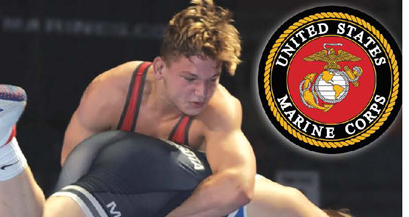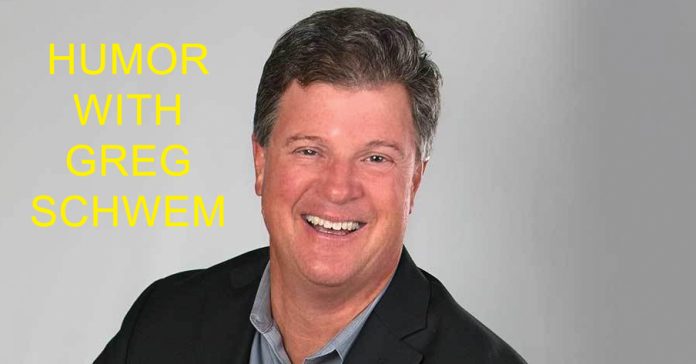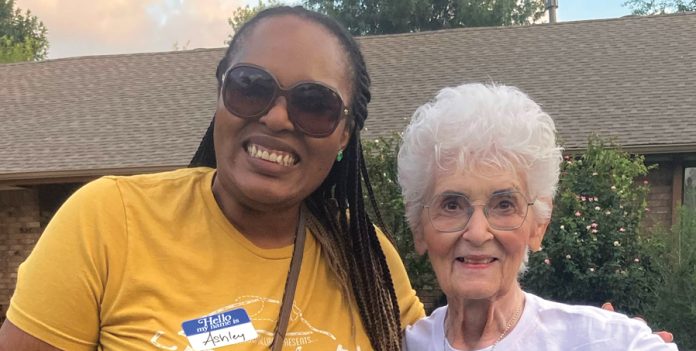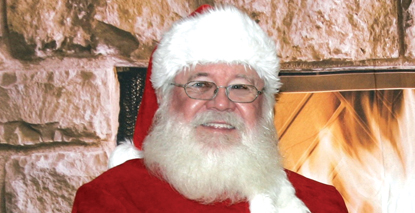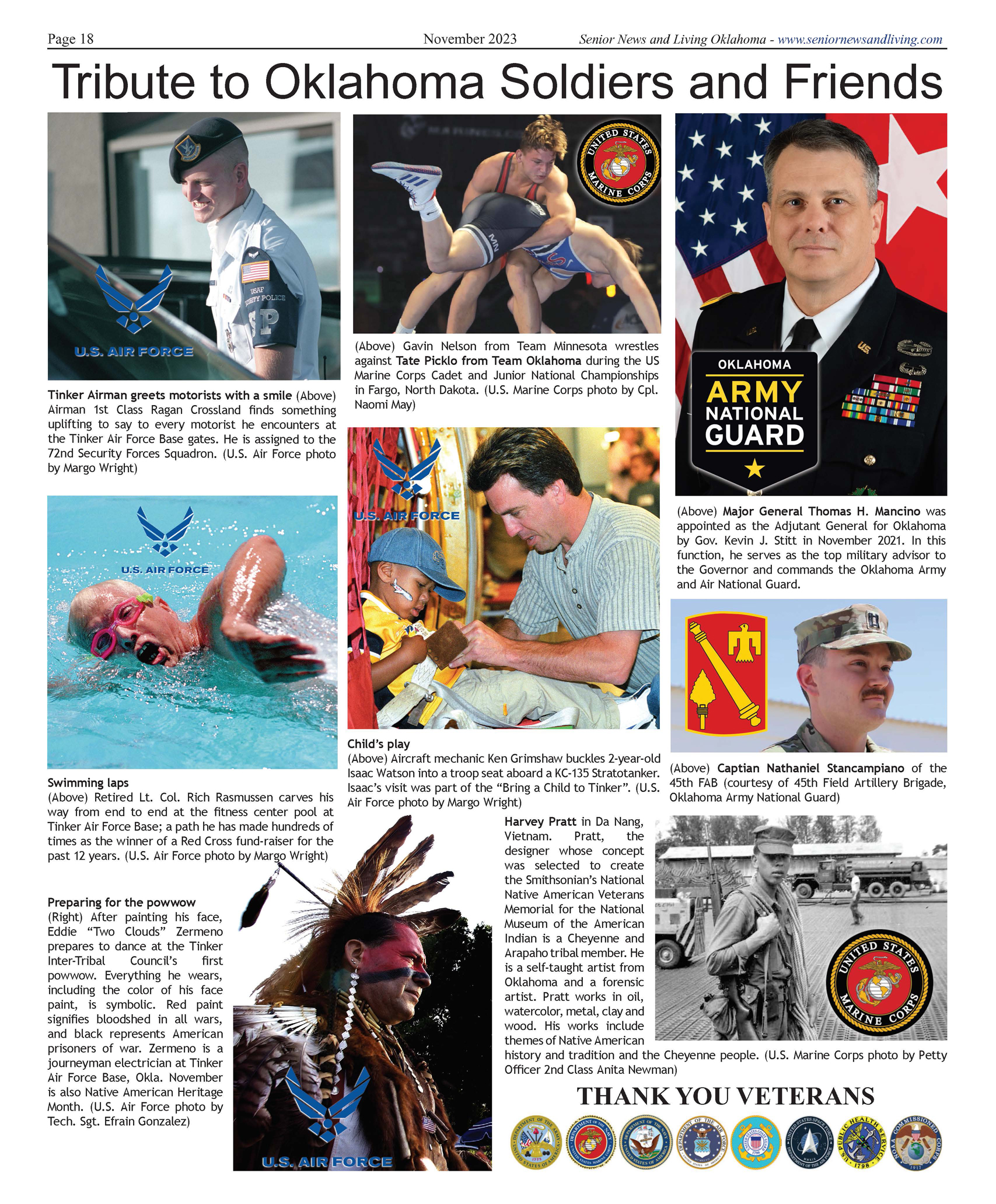
A Tribute to Veterans – Scroll of Honor
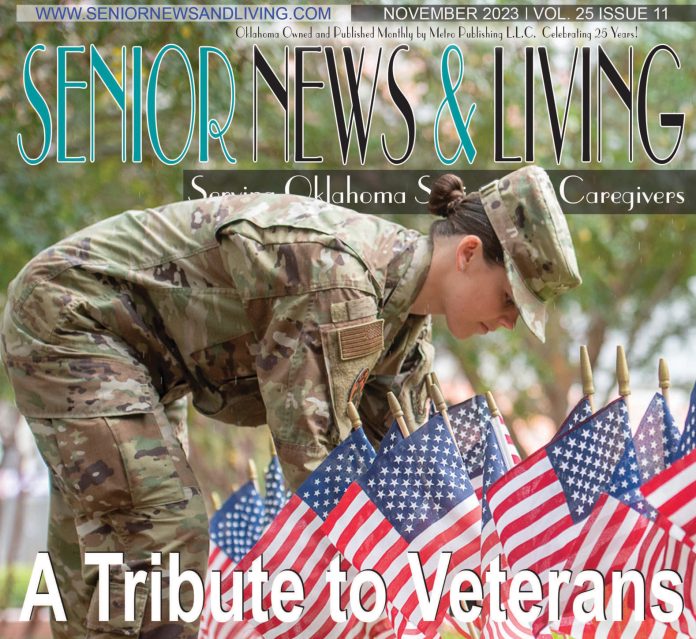
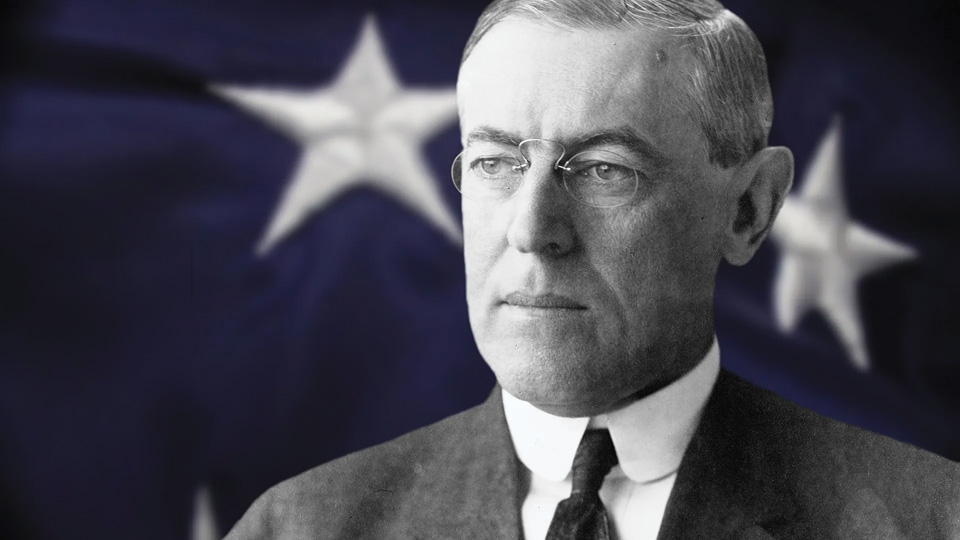
History of Veterans Day
World War I – known at the time as “The Great War” – officially ended when the Treaty of Versailles was signed on June 28, 1919, in the Palace of Versailles outside the town of Versailles, France. However, fighting ceased seven months earlier when an armistice, or temporary cessation of hostilities, between the Allied nations and Germany went into effect on the eleventh hour of the eleventh day of the eleventh month. For that reason, November 11, 1918, is generally regarded as the end of “the war to end all wars.”
Veterans Day continues to be observed on November 11, regardless of what day of the week on which it falls. The restoration of the observance of Veterans Day to November 11 not only preserves the historical significance of the date, but helps focus attention on the important purpose of Veterans Day: A celebration to honor America’s veterans for their patriotism, love of country, and willingness to serve and sacrifice for the common good.
Veterans Day Timeline – 1919
In November 1919, President Wilson proclaimed November 11 as the first commemoration of Armistice Day with the following words: “To us in America, the reflections of Armistice Day will be filled with solemn pride in the heroism of those who died in the country’s service and with gratitude for the victory, both because of the thing from which it has freed us and because of the opportunity it has given America to show her sympathy with peace and justice in the councils of the nations…”
The original concept for the celebration was for a day observed with parades and public meetings and a brief suspension of business beginning at 11:00 a.m.
Veterans Day Timeline – 1926
The United States Congress officially recognized the end of World War I when it passed a concurrent resolution on June 4, 1926, with these words:
The United States Congress officially recognized the end of World War I when it passed a concurrent resolution on June 4, 1926, with these words:
Whereas the 11th of November 1918, marked the cessation of the most destructive, sanguinary, and far reaching war in human annals and the resumption by the people of the United States of peaceful relations with other nations, which we hope may never again be severed, and Whereas it is fitting that the recurring anniversary of this date should be commemorated with thanksgiving and prayer and exercises designed to perpetuate peace through good will and mutual understanding between nations; and
Whereas the legislatures of twenty-seven of our States have already declared November 11 to be a legal holiday: Therefore be it Resolved by the Senate (the House of Representatives concurring), that the President of the United States is requested to issue a proclamation calling upon the officials to display the flag of the United States on all Government buildings on November 11 and inviting the people of the United States to observe the day in schools and churches, or other suitable places, with appropriate ceremonies of friendly relations with all other peoples.
Veterans Day Timeline – 1938
An Act (52 Stat. 351; 5 U. S. Code, Sec. 87a) approved May 13, 1938, made the 11th of November in each year a legal holiday—a day to be dedicated to the cause of world peace and to be thereafter celebrated and known as “Armistice Day.” Armistice Day was primarily a day set aside to honor Veterans of World War I.
Veterans Day Timeline – 1954
In 1954, after World War II had required the greatest mobilization of soldiers, sailors, Marines and airmen in the Nation’s history; after American forces had fought aggression in Korea, the 83rd Congress, at the urging of the Veterans service organizations, amended the Act of 1938 by striking out the word “Armistice” and inserting in its place the word “Veterans.” With the approval of this legislation (Public Law 380) on June 1, 1954, November 11th became a day to honor American Veterans of all wars.
Later that same year, on October 8th, President Dwight D. Eisenhower issued the first “Veterans Day Proclamation” (PDF) which stated: “In order to insure proper and widespread observance of this anniversary, all Veterans, all Veterans’ organizations, and the entire citizenry will wish to join hands in the common purpose. Toward this end, I am designating the Administrator of Veterans’ Affairs as Chairman of a Veterans Day National Committee, which shall include such other persons as the Chairman may select, and which will coordinate at the national level necessary planning for the observance. I am also requesting the heads of all departments and agencies of the Executive branch of the Government to assist the National Committee in every way possible.”
Veterans Day Timeline – 1958
In 1958, the White House advised VA’s General Counsel that the 1954 designation of the VA Administrator as Chairman of the Veterans Day National Committee applied to all subsequent VA Administrators. Since March 1989 when VA was elevated to a cabinet level department, the Secretary of Veterans Affairs has served as the committee’s chairman.
Veterans Day Timeline – 1968
The Uniform Holiday Bill (Public Law 90-363 (82 Stat. 250)) was signed on June 28, 1968, and was intended to ensure three-day weekends for Federal employees by celebrating four national holidays on Mondays: Washington’s Birthday, Memorial Day, Veterans Day, and Columbus Day. It was thought that these extended weekends would encourage travel, recreational and cultural activities and stimulate greater industrial and commercial production. Many states did not agree with this decision and continued to celebrate the holidays on their original dates.
Veterans Day Timeline – 1971
The first Veterans Day under the new law was observed with much confusion on October 25, 1971. It was quite apparent that the commemoration of this day was a matter of historic and patriotic significance to a great number of our citizens, and so on September 20th, 1975, President Gerald R. Ford signed Public Law 94-97 (89 Stat. 479), which returned the annual observance of Veterans Day to its original date of November 11, beginning in 1978. This action supported the desires of the overwhelming majority of state legislatures, all major veterans service organizations and the American people.
To view the “Veterans Day Proclamation” (PDF) visit:
https://tile.loc.gov/storage-services/service/ll/fedreg/fr019/fr019198/fr019198.pdf
GREG SCHWEM: My dog would like a bottle of your finest bourbon
by Greg Schwem
I recently received a concise text message that, depending on your affection for canines, was adorable or unbelievable:
“Sorry, I can’t meet tonight. I have a swim class…for my dog. She is spoiled.”
“She” and her owner are exactly the types of travelers Harvest Hosts CEO Joel Holland has on his radar.
Holland, 38, purchased the 13-year-old travel membership network from its original owners in 2018. Aimed at “self-contained” travelers (aka campers and RV-ers,) Harvest Hosts partners with thousands of farms, wineries, breweries and other unique destinations only too happy to host camping vehicles ranging from your basic fifth-wheel to your tricked out Airstream, for a night. Occupants, and their pets, pay no camping fees; instead they are sort of on the honor system to purchase products — perhaps a wine club membership or a bottle of homemade bourbon — their gracious hosts are selling.
“We recommend a $30 purchase. But it’s not a requirement,” Holland said. People are very generous and tend to spend $50. That turns into $50 million that goes back into these small businesses.”
Harvest Hosts takes none of those profits; participating properties pay a fee to join the program and get listed on its site.
So what about those guests who just can’t leave their beloved pooches at home? Harvest Hosts recently found 52% of travelers base their routes, and destinations, on pet-friendly camping locations. If that location contains a body of water for dogs to show off their swimming skills, all the better. Holland estimates a quarter million Harvest Hosts travelers, mostly over 55 and empty nesters who consider a dog their “new kid,” take their pets along for adventures.
“We learned early on that we needed to have a filter that said ‘pet friendly,’” Holland said. “In the process of recruiting hosts, one of the things we angled for were pet friendly locations.”
Swilled Dog, a distillery of bourbon and cider in Upper Tract, West Virginia, has proven to be the perfect Harvest Hosts partner. Currently slammed with campers taking advantage of fall colors that complement their day hikes to Spruce Knob, Seneca Rocks and Smoke Hole Canyon, the property hosts up to four RVs per night.
Once parked, dogs have free reign.
“ Dogs are allowed to relax alongside their owners in both our cider tasting room and whiskey room or even play a game of cornhole outside,” said Lauren Hagman, Swilled Dog’s operations manager.
Upon hearing this, I texted my friend and asked if her dog was currently enrolled in cornhole lessons. I have yet to hear back.
Most guests abide by the aforementioned honor system, purchasing bourbon or cider for family and friends, Hagman said. The distillery also donates a portion of its profits to various dog rescue and adoption programs.
Holland, a seasoned traveler who believes “there is something fun to do in every state,” is only too happy to share his unique adventures, which include getting a massage from an 84-year-old nun, a proprietor of Heartland Farm, an Alpaca ranch in Pawnee Rock, Kansas. Although not listed on the property’s website, massages are a legitimately offered service.
“I learned it’s OK to be naked in front of nuns in the right context,” he chuckled.
With post-pandemic travel restrictions easing, Harvest Hosts business is booming as travelers opt for wide open spaces so they, and their pets, can roam freely. Holland says he’ll continue running the business, and seeking new dog-loving sites, “as long as it’s fun.”
What could be more fun for a dog than to belly up to a bar and join their owner in a glass of locally produced wine?
Particularly if the dog has completed Wine Appreciation school.
(Greg Schwem is a corporate stand-up comedian and author of two books: “Text Me If You’re Breathing: Observations, Frustrations and Life Lessons From a Low-Tech Dad” and the recently released “The Road To Success Goes Through the Salad Bar: A Pile of BS From a Corporate Comedian,” available at https://www.amazon.com/. Visit Greg on the web at https://www.gregschwem.com/.
You’ve enjoyed reading, and laughing at, Greg Schwem’s monthly humor columns in Senior Living News. But did you know Greg is also a nationally touring stand-up comedian? And he loves to make audiences laugh about the joys, and frustrations, of growing older. Watch the clip and, if you’d like Greg to perform at your senior center or senior event, contact him through his website at https://www.gregschwem.com/)
SNL CROSSWORD CORNER – NOVEMBER
Across
1 Sarah Spain’s network
5 Percussion set
10 Cards
14 “Go on, git!”
15 Tickle
16 __ were
17 Textile machine
18 Nigerian seaport
19 “Ciao”
20 Medic with an office at Fisherman’s Wharf?
23 Expert
24 Extremely chill
25 Leaders inclined to work as a group?
31 Extremely cold
32 Channel marker
33 Picked up the tab
35 BYU or NYU
36 Sun screen
37 Strive (for)
40 African country in the Maloti Mountains
41 Drains
42 Summits
45 Captain Hook’s incredulous assessment of his nemesis?
47 Statue base
49 Melber of MSNBC
50 Puts comfy shoes through rigorous testing?
56 Tropical spot
57 Safari equine
58 Most CFOs
60 Some game
61 “Middlemarch” novelist
62 Bend at a barre
63 Retired boomers
64 Action
65 Blood bank fluids
Down
1 Subj. for those wishing to be bilingual
2 Utterly beyond repair
3 Play down
4 Motto for the ruthless
5 Meteorological effect caused by refraction
6 Desktop with an AppleCare option
7 Literary award with a spaceship logo
8 Starting on
9 Lab work
10 Thinned (down)
11 Pulitzer-winning journalist Wilkerson
12 Early ICBM
13 Hung around
21 Play-__
22 “Science of Logic” philosopher Georg
25 Small ammo
26 Director Jean-__ Godard
27 LAX postings
28 Superhero once played by Stephen Amell on The CW
29 “__ Comes to Pemberley”: P.D. James novel
30 Obama daughter
34 Friendly honk
36 Rats, gnats, and brats
37 Element in an algebraic equation
38 Wall St. event
39 Key that exits full-screen mode
40 Brand of packaged bagels
41 Is extremely frugal
42 Ladybug prey
43 Shuts
44 “The Gleaners” painter Jean-Fran ois
46 River that rises in the Bernese Alps
48 Fuzzy states
51 Move to a warmer state?
52 Drama honor
53 Cut short
54 Ink
55 Place to hibernate
59 “Wide Sargasso __”: Jean Rhys novel
VillagesOKC – A Plan for Aging That Connects The City
Story and photo by Eddie Roach, VillagesOKC Member/Volunteer
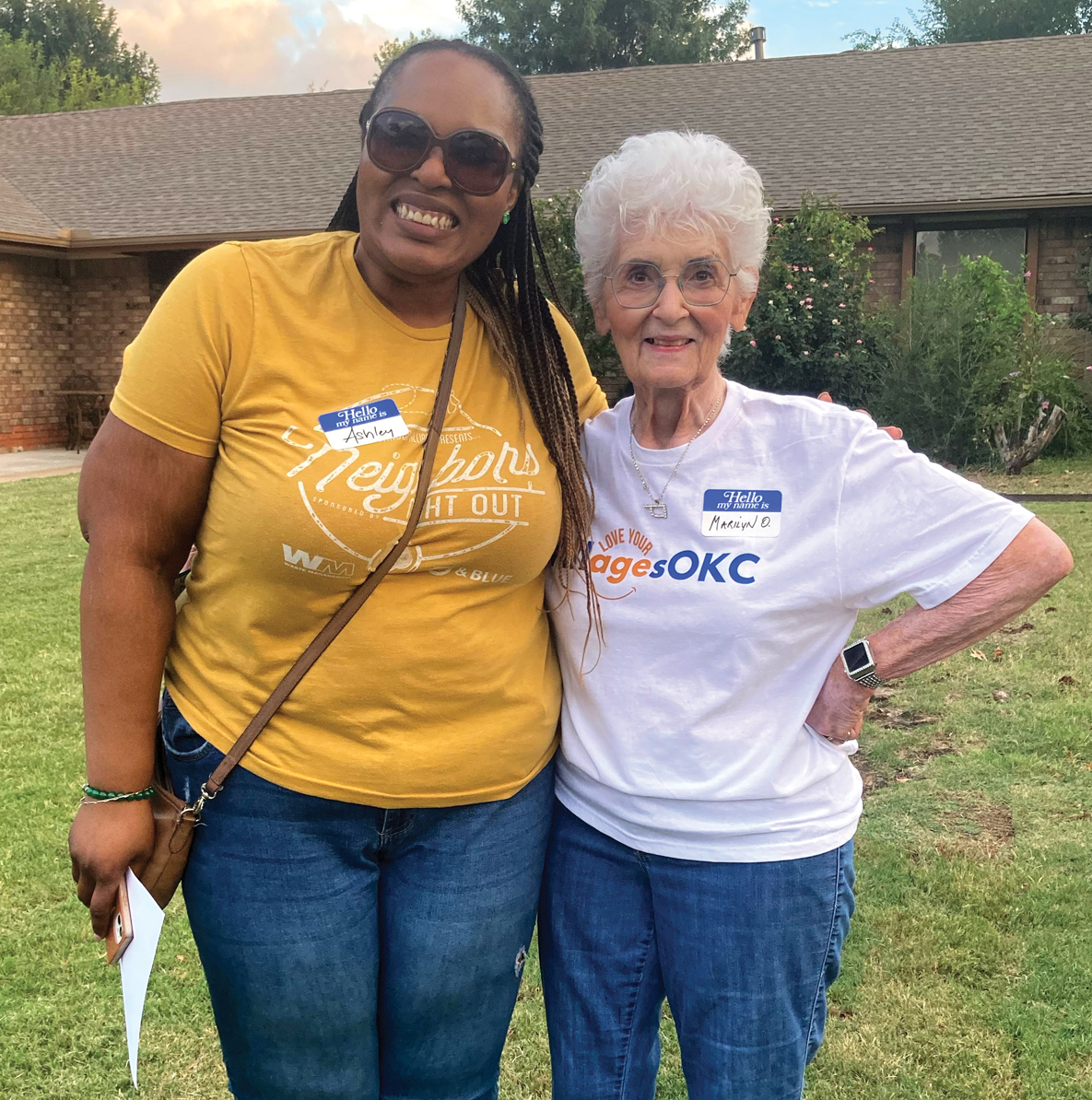
“VillagesOKC is everywhere!” That’s what we hear from friends who’ve been watching as we’ve grown over the past five years. And, while we aren’t everywhere, we are lots of places with our own events and partnering with others.
Our newest partnerships are with the YMCA of Greater Oklahoma City and the Neighborhood Alliance of Central Oklahoma. The YMCA partnership is intended to foster a sense of community and social connection among members of the YMCA and VillagesOKC. The Neighborhood Alliance partnership includes the opportunity to publish older-adult focused articles in the Alliance’s quarterly newsletter, which has a distribution list of 6,600.
Here are some of the other organizations with which VillagesOKC partners to connect members with information and resources to age successfully – with vitality and purpose.
– Caregiver Ambassadors is a program within VillagesOKC which helps train a network of volunteers guiding faith communities through the challenges of aging.
– Senior Living Truth Series offers two monthly seminars on topics affecting older adults. We are education partners with the Truth Series.
– NewView Oklahoma is a valuable partner that provides services and employment opportunities to empower individuals who are blind or have low vision.
– Oklahoma Senior Journal provides a comprehensive guide to all things senior as well as hosting the Second Half Expo each October.
– OKC Town Hall Lecture Series brings nationally recognized speakers to the city. We are proud to partner with them and promote these stimulating and informative lectures.
– Veterans Initiatives include partnering with Force50 Foundation, Oklahoma Warriors Honor Flight, Vietnam Era Veterans recognition and pinning, and Path to Freedom hosted by NewView Oklahoma.
Details for all our activities and those of our partners are on the Events Calendar on our website: https://www.villagesokc.org/, or call (405) 990-6637. We’d love to see you!
Three Healthcare Missteps of Military Retirees
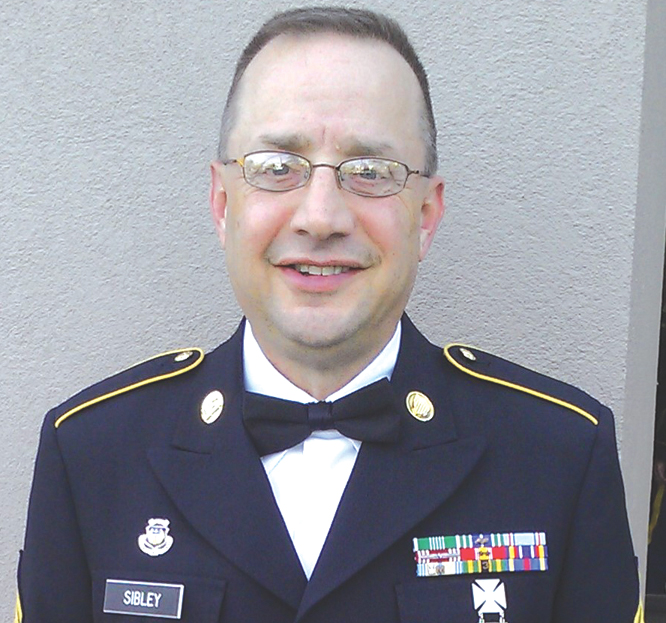
Story by By Steven Sibley, MBA/Healthcare Administration
I enjoyed a 36 year career in the military, in the Air Force and Army, on active duty and in the reserve. I was honorably discharged from the Active Guard Reserve (AGR) in 2017 at the age of 61, after 10 years as an Army Reserve Career Counsellor, where my primary duties were recruiting, retention, and educating reservists about their benefits. Now, I do the same for military retirees with their healthcare benefits. While we have great healthcare benefits, many retirees do not access or understand how to maximize them. In my opinion, they make the following three crucial missteps.
First, many retirees fail to use the VA Healthcare System or file for VA disability. Generally, anyone who has served on active duty, is eligible for both these benefits. Veterans can seek care with the Oklahoma VA Hospital by enrolling into the VA’s OKC downtown location, room 1B109. Veterans Services Officers (VSOs) are in the same room who can assist with filing disability claims. Claims can also be file at most VFW and American Legion post’s, the DAV, and the Oklahoma Department of Veterans Affairs (ODVA).
Secondly, many retirees seek another career after leaving active service. Those employers generally offer healthcare benefits. Since retirees are eligible for Tricare Prime or Select up to age 65, they should carefully review their employer plan with Tricare, to see which offers the best benefits and lowest costs. Once a retiree turns 65, they will convert to Medicare with Tricare for Life (TFL). TFL is a premium free wrap around plan, secondary to Medicare, with prescription drug coverage (aka express scripts). Once on Medicare, there is no need for a retiree to continue paying for an employer health plan, which becomes the 3rd payor. This means they only pay the remaining balance after both Medicare, the primary coverage, and TFL, the secondary pays everything Medicare doesn’t. In this scenario, there would be no unpaid balance, so there would be no claim to file with a 3rd payor. It’s simply insurance you do not need.
The third problem is that there is little clear training given about TFL and exactly how it works. Retirees just know that they go to the doctor, get care, and don’t get a bill. While that’s a great benefit, veterans deserve and can access more from the Medicare portion of their TFL by using Medicare Part C (Medicare Advantage) which will positively impact their health, wellness, and more.
I offer needed education, along with answers and advice to both veterans and their beneficiaries about their healthcare benefits. No cost, no pressure, just help. We’ll sit down and have a conversation until we are satisfied that you understand all that you need to know to make an informed decision about ALL the great healthcare you’ve earned and deserve for you and your dependents. See my ad on this page, and give me a call at 405-850-1569.
Veteran Resource Fair Coming to Guthrie American Legion
Senior News & Living and VIPCare will be hosting a Veteran Resource Fair November 16th at the Guthrie American Legion LeBron Post 58 at 123 N First St., Guthrie, OK 73044.
Coffee, beverages, snacks, and donuts will be served at the event, and veterans are encouraged to attend and enjoy learning and socializing.
Resources covered will include: Veterans Healthcare Options
Veterans Mental Health Services
Veterans Disability Claims
Veterans Home Care
Veterans Education
Veterans Beneficiaries Benefits
and more…
For information about the event, call Steve Sibley at 405-850-1569. We will see you there!
Navigating the Next Phase: Strategies for Thriving in Your Newly Empty Home
Image by Freepik
Entering the empty nest phase can be both exhilarating and daunting. Parents often experience a mix of emotions, from sadness to liberation, as their children leave home. However, it’s also an opportunity for self-renewal and personal growth. In this helpful guide presented by Senior News & Living OK, we will delve into eight pivotal strategies for making this new stage in life truly fulfilling. These suggestions can help parents shift focus towards their own aspirations.
Unearth Hidden Talents: Cultivating a New Hobby
Ever wanted to write poetry or learn how to scuba dive? Now is your chance! Acquiring a new hobby or skill brings with it a sense of accomplishment. Empty nesters can utilize their newfound freedom to explore interests they never had time for before. From painting landscapes to cooking gourmet meals, this is an opportunity for both joy and self-expression.
Degree of Success: Furthering Your Education
Longing for a career change or promotion? Going back to school may be the right move. With fewer family commitments, it’s easier to focus on academic achievements. Opt for an online program that offers a flexible schedule and suits your specific interests and career goals, such as one with a bachelor’s degree in business. Such programs cater to adult learners and can pave the way for new career opportunities – all on their own schedule.
Wanderlust Unleashed: Visit Your Dream Places
Traveling as an empty nester offers a unique opportunity to rediscover the world and oneself without the constant demands of parenting. The freedom to spontaneously explore destinations or delve into long-desired adventures becomes a reality. For those who’ve dreamt of experiencing the magic without the constraints of child schedules, Disney World stands out as a mesmerizing destination. To make this dream more accessible, there are websites that offer deals and insider tips to ensure an affordable experience; simply click here to start the journey. Embracing this phase of life can be rejuvenating and fun.
Strengthen Family Bonds: Reconnect with Your Kids
Family remains essential, even when the nest is empty. The absence of daily responsibilities presents an opportunity to nurture family relationships in a new way. Empty nesters should prioritize family visits, gatherings, and even vacations. Moments like these strengthen family ties and create lasting memories.
Reinvent Your Castle: Home Revamp
With extra space and time, why not consider a home makeover? You can transform that old kids’ room into a cozy reading nook or a sleek (but functional) home office. Investing in home improvements like kitchen renovations or redecoration projects can be fulfilling. The result is a home that reflects your current needs and aesthetic preferences.
Serenity Now: Embrace Mindfulness
A quieter home offers the perfect backdrop for introspection and self-care. Activities like yoga, meditation, or even simple nature walks can be calming. Empty nesters can channel this tranquil energy towards better mental and emotional well-being. Incorporating mindfulness into your daily routine can yield a balanced, healthier life for years to come.
Expand Your Circle: Make Social Connections
Although your kids might have moved out, there’s no reason to feel isolated. Now is the perfect time to cultivate new friendships and rekindle old ones. Whether joining a book club, partaking in social gatherings, or engaging in community service, social activities can be a balm for loneliness. An expanded social circle can offer emotional support and enrich your life.
Community Engagement: Offer Your Time and Skills
Volunteering is a fulfilling way to give back and stay active. Offering your time to causes you care deeply about can be immensely satisfying. Whether you opt to volunteer at a local animal shelter, school, or charity, your efforts can make a difference. Engaging in community service can also provide a sense of purpose.
Transitioning into the empty nest phase is an exciting journey into personal freedom and discovery. By venturing into new hobbies, advancing your education, exploring the world, reconnecting with family, sprucing up your home, practicing mindfulness, widening your social circle, and volunteering, you can enrich this chapter of your life. Your nest may be empty, but your life doesn’t have to be. So, why not embrace this new phase and explore all it has to offer?
14th Annual The Santa Market Craft Show
Story and photos by Darl DeVault, contributing editor
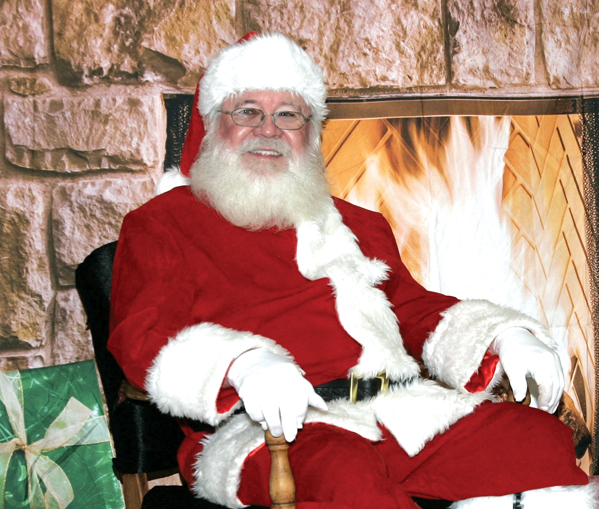
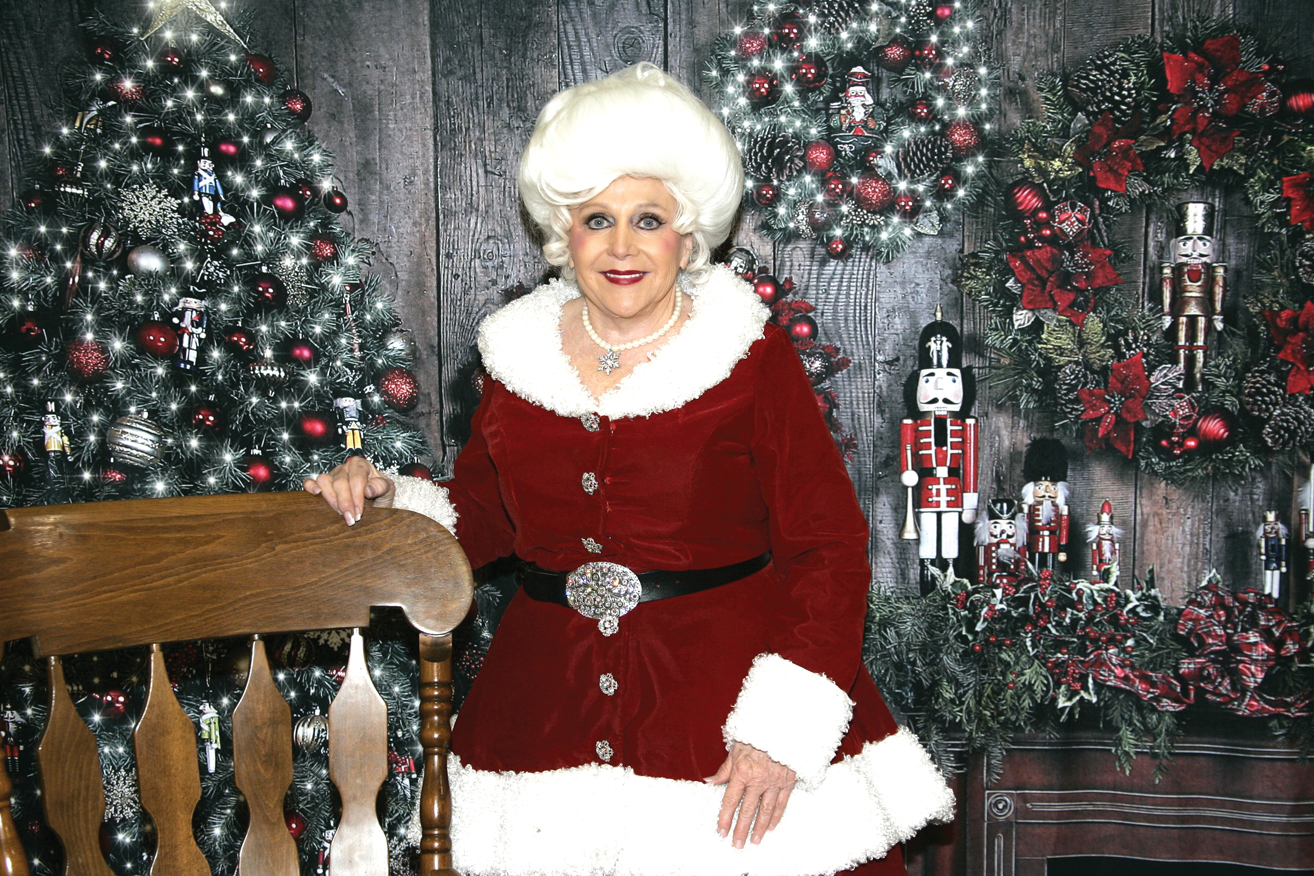
The Santa Market Craft Show, December 1-2, in the Pavilion Building at the OKC Fairgrounds, is Oklahoma City’s premiere free, two-day showcase for one-of-a-kind, Christmas-themed creations benefiting the Alzheimer’s Association of Oklahoma.
As one of Oklahoma’s most extensive free-admission, nonprofit arts and crafts shows, the 192 carefully chosen, creative vendors will sell their products during the 14th annual festive shopping experience. The show offers free parking, a silent auction, and more. The hours are 9 a.m. to 4 p.m., Friday and Saturday. Handcrafted items are available for all of the shoppers’ seasonal gift needs at an event that raised $44,000 last year for Alzheimer’s work.
Visitors are encouraged to bring their children to get free photos taken all day with Santa at Oklahoma City’s most prestigious Christmas market each year.
“We work on this show all year,” organizer Molly Nye said. “It is a true labor of love and helps all of us by doing something positive to combat Alzheimer’s. If anyone would like to be involved by volunteering, donating an item or service for the auction, or an item for the Alzheimer’s booth, please contact Joan Clarke at 405-314-1033. Be sure to get your free picture with Santa, Del Humphreys and visit with the lovely Mrs. Claus, Linda Turner. I also have it on good authority that The Grinch himself will be there this year.”
Shoppers are treated to home decor, homemade arts and crafts, boutique and holiday items, jewelry, children’s clothes, books and food goodies. The first 1,000 visitors receive free shopping bags sponsored by local businesses.
Joan Clarke, Molly Nye and Megan Nye began the event in 2010, after Joan’s husband died of Alzheimer’s in 2007, to support the charity addressing one of America’s most challenging diseases.
“Molly and I had been selling items at craft shows for years, and we decided to start our own event. We booked a small room in a hotel and started with 17 vendors,” Clarke said. “By the time our third year began, we realized how much work putting on a quality show involves, so we decided to make it a fundraiser. Molly immediately suggested Alzheimer’s since Joan lost her husband and Megan lost her father to the terrible disease.”
All funds raised through The Santa Market further the care, support and research efforts of the Alzheimer’s Association, a nonprofit 501(c)3 organization. All donations are tax-deductible as allowed by law.
“Our excellent vendors make this show what it is each year. We are one big family; everyone helps promote the show, advertise, and find new vendors. They donate to our cause, monetarily and with their products, even though it’s voluntary,” Clarke said. “They help with set up, clean up and everything in between. We have three vendors that have been with us all 14 years. Countless more have been with us for 5, 8, or even 10 years. One vendor named it ‘The Greatest Show on Earth,’ and it truly is.”
The organizers limit the number of crafters assigned spaces. Clarke says It is not about turning away new vendors but only allowing a limited number of each type of vendor. They wish they could take everyone, but having a variety makes for a better shopping experience, and the vendors have a much better chance of success.
Clarke says some vendors see the event as an opportunity to make sure their favorite charity receives as much as possible from their craft world and them personally. By writing personal checks to the Alzheimer’s Association when The Santa Market rolls around, these vendors do their part to help. They also donate products and gift certificates to the Alzheimer’s auction and the Alzheimer’s booth.
The Santa Market promoted the show at the annual Walk to End Alzheimer’s that occurred on October 28 in downtown OKC. This year, the event saw 1,431 people walk in 290 teams at Scissortail Park to help raise awareness and funds for care, support and research. The event exceeded its $625,000 in donations goal.
Clarke and her family have walked every year since 2003.
National presenting sponsor Edward Jones helps to make the walks the world’s largest event to fight Alzheimer’s. The Santa Market was one of three Impact Sponsors this year and fielded a team for the walk.
This year, the US Food and Drug Administration approved LEQEMBI, a prescription medicine treatment for people with mild cognitive impairment (MCI) or mild dementia due to Alzheimer’s disease. This newly approved drug in the US targets amyloid proteins and reduces existing amyloid brain plaque.
In a large, 18-month study, treatment with LEQEMBI was proven to slow the progression of early Alzheimer’s disease. It helped people remember, solve problems, and complete daily activities for longer.
The organizers say the successful 13 years of The Santa Market Craft Show could only be done with the help of quality vendors, loyal customers, volunteers, sponsors, and donors. They call it The Santa Market Family and hope everyone will attend to make it a success again this year. This year, Steve Eldridge, Senior News & Living and Oklahoma Nursing Times publisher, is a Diamond Sponsor. For more info, see: www.thesantamarket.org.


